Mushin no Ryu, a dojo perpetuating Katori Shinto Ryu
With diverse martial experiences, the founders of Mushin no Ryu decided to build their practice and teaching of martial arts on the fundamental principles from the Katori school. Indeed, if various traditions exist, each presenting their specificities and interests, it is the basis of Katori Shinto Ryu which had the greatest influence on the technical anchoring, bodily structuring and memory transmission within Mushin no Ryu.
Founded in the 15th century around 1447, the Tenshin Shōden Katori Shintō-ryū Mokuroku Heiho no Shinsho teaches a method intended for fighters in medieval Japan. From the battlefields of the Sengoku period to modern post-Edo Japan, from the Meiji Restoration to the post-World War II period, until the 21st century, the school has perpetuated its path. This has obviously been transformed according to contextual developments, but as koryu it is nearly six hundred years of martial tradition which is today within reach of the sword.
The specificity of the school undoubtedly lies in the diversity of the disciplines taught. No less than nine weapons are treated by Katori instructors. These are the art of the sword (kenjutsu), drawing (iaijutsu), the long staff (bojutsu), the war halberd (naginatajutsu), the short sword (kodachi), the two swords (ryoto), spear (sojutsu), point throwing (shurikenjutsu), and melee (yawarajutsu). In addition to weapons, there are disciplines linked to the more general study of the art of war and command. These include the art of intelligence (ninjutsu), fortifications (chikujojutsu), strategy and tactics (gunbai heiho), astrology (tenmon chirigaku), and certain philosophical aspects.
Of all the disciplines considered necessary at the time for the training of a fighter, only those related to weapons are actively taught, with the exception of shuriken, which was replaced by cutting exercises. Mushin no Ryu, however, considers that cultivating one's mind is as important as maintaining one's body or perfecting one's technique. It is better to be a warrior in your garden than a gardener in war. Also, emphasis is placed on the exchange and confrontation of points of view. The welcome of numerous practitioners of other arts or other currents of Katori conceals an unparalleled richness. The same goes for discussions between dojo practitioners. Critical thinking and a curious mind are ardently encouraged.
When Iizasa Chōi-sai Ienao, the founder of Katori, went to promote his method of teaching, he insisted on the need to extend it to anyone who wanted to learn. No distinction of rank, fortune or potential should hinder the possibility of training. This is a value that the Belgian Mushin no Ryu dojo intends to maintain. So, you are all welcome to learn about a centuries-old art, a true art of living.
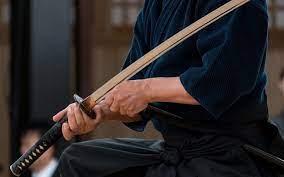
IAIJUTSU
The practice of iaijutsu consists of drawing and using a katana with precision and fluidity. It emphasizes the ability to respond quickly and effectively to threats or sudden confrontations.Iaijutsu is an integral part of many martial arts schools. In the tradition of Katori Shinto ryu, iaijutsu aims at training the practitioner to both wield the sword in a battlefield situation and in a civil duel.
Eleven kajos are taught.
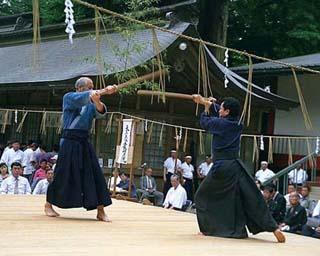
KENJUTSU
Kenjutsu refers to the method, techniques and art of the sword. Through four basic and five advanced kajos, the practitioner learns to handle a boken (wooden sword) and to structure their body postures.
Kenjutsu is the first discipline taught within the school because it offers the necessary, although difficult, matrix framework relating to the handling of an inanimate object. The practitioner thus becomes familiar with the notions of distance, line and rhythm.
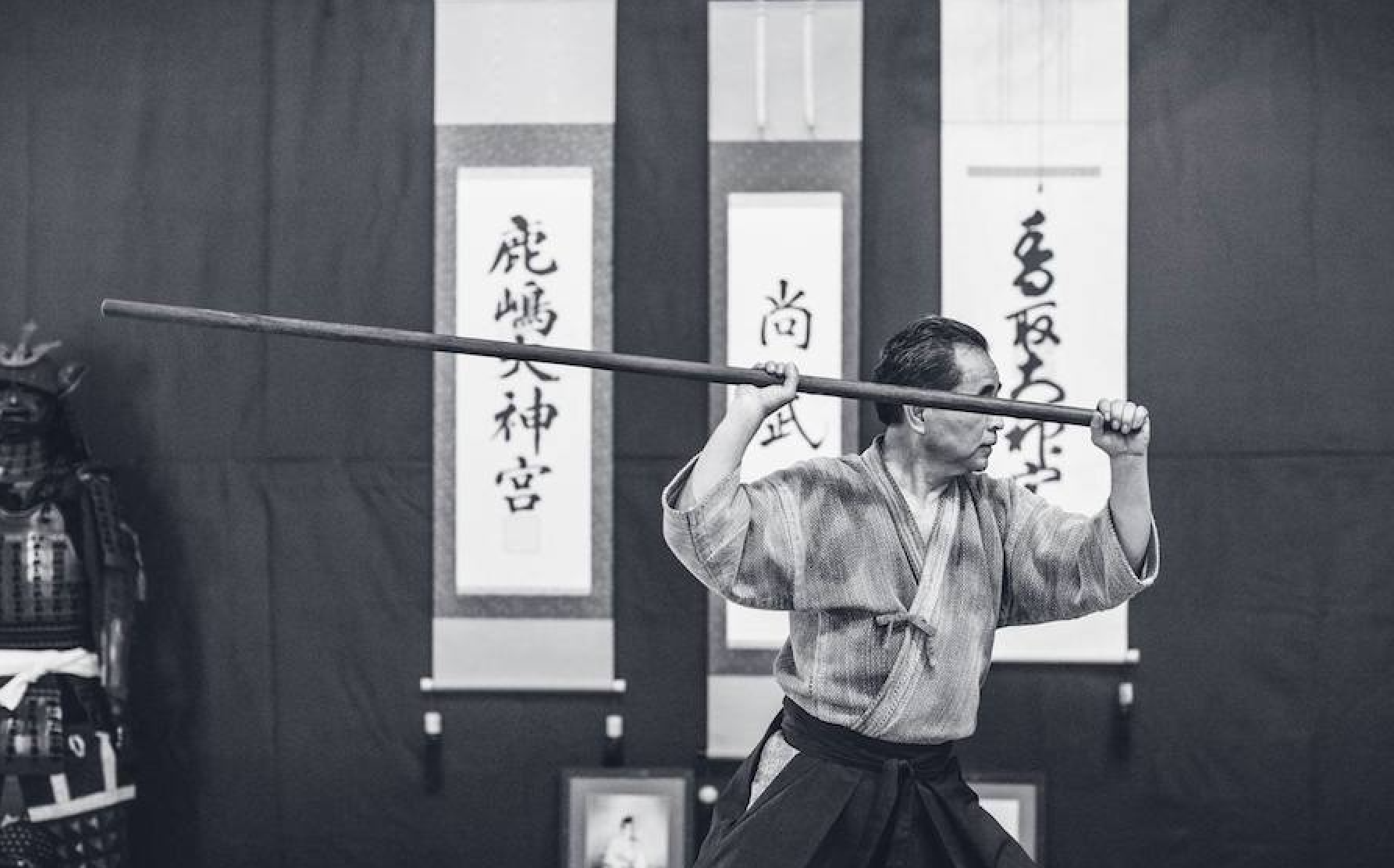
BOJUTSU
Bojutsu focuses on the use of the bō, a long wooden staff. Unlike the sword or naginata, Bojutsu techniques reveal striking and blocking movements to the practitioner.
Bojutsu teaches you to maintain a safe distance from your opponent who struggles to close the gap. Straightness and commitment of the body are the key words of this discipline which instills the importance of verticality and horizontality.
Six basic kajos are taught.
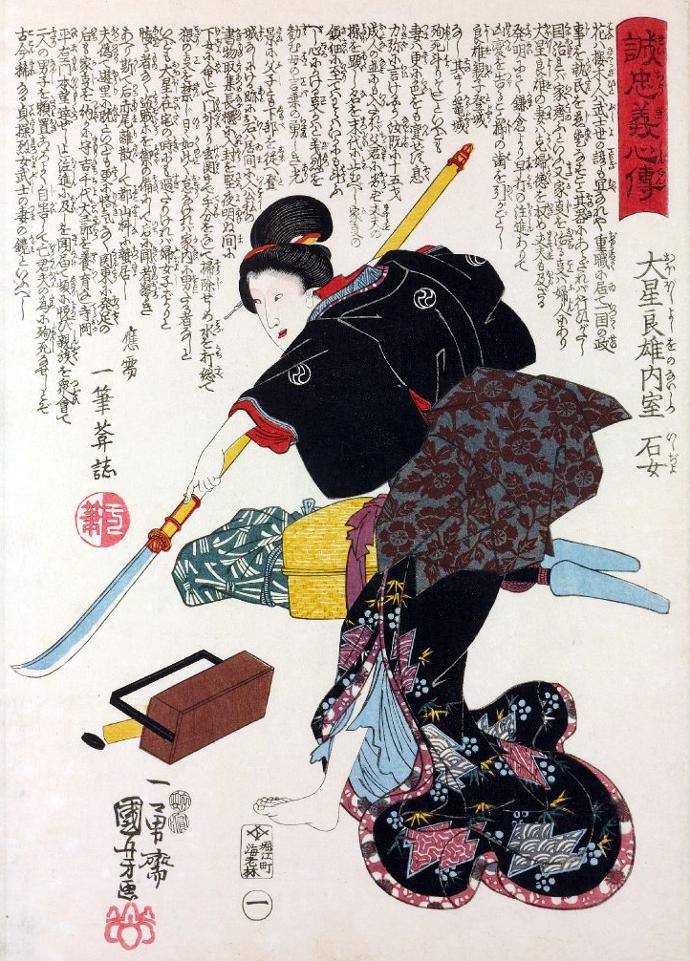
NAGINATAJUTSU
Naginatajutsu teaches the art of the naginata, the war halberd. Traditionally reserved for women because of its length and versatility, it is also loved by men for its same virtues.
Mastery of the naginata instills the trunk - hips - legs association. It promotes anchoring. Facing the naginata, the sword learns to tackle two ends - one sharp and the other blunt.
Four basic kajos are taught.
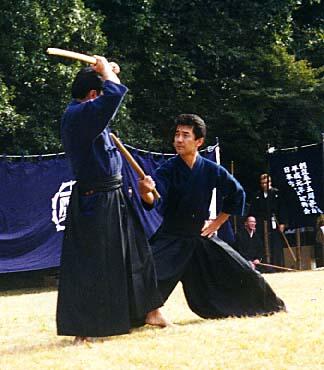
KODACHI
Between the wakizashi and the tanto, the kodachi is a short sword that can be used as a last resort. Practical in small spaces, it can be handled with one hand.
The kodachi reaffirms the importance of dodging before parrying, the necessity of line changes and the usefulness of good footwork. The practitioner learns to enter the sphere of his counterpart, at the right pace.
The kodachi underlines the benefits of adequate coordination ki ken tai no ichi - the alliance of mind, sword, body. All technical subtlety is required here.
Three basic kajos are taught.
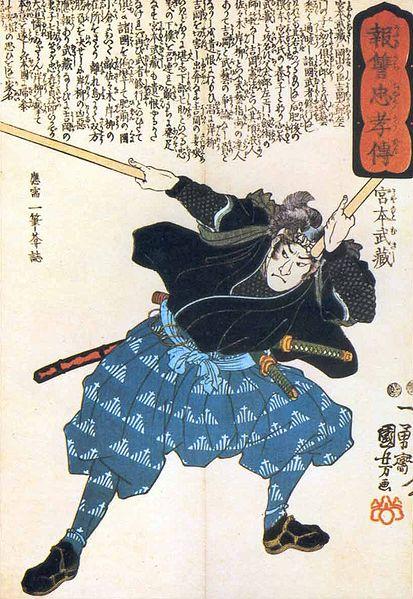
RYOTO
Ryoto consists of the simultaneous wielding of two swords, one long and the other short. The main difficulty lies in the coordination of movements.
Ryoto refines awareness of the shoulder, elbow and hip movements. It promotes the dissociation of the left and right sides of the body. Mastering this discipline requires the proper incorporation of all the principles linked to the previous weapons.
Four basic kajos are taught.
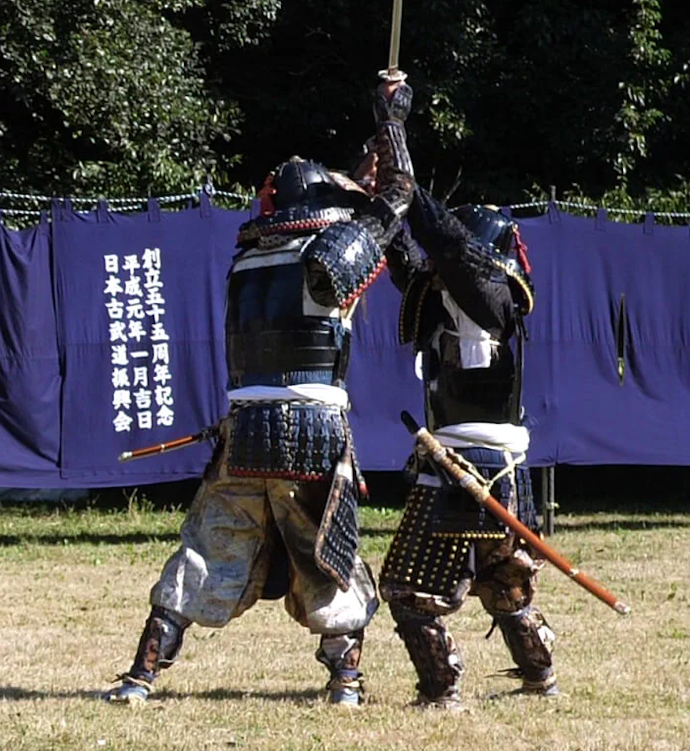
YAWARAJUTSU
Yawara is the old term partly designating the hand-to-hand techniques of contemporary jujutsu. It nevertheless diverges from its modern counterpart in that it focuses, like the other disciplines of the school, on armored combat.
The fundamental principles of bare hands remain but the emphasis is placed on the different elements of the armor and how to grip them to bring your opponent to the ground. This discipline is therefore intrinsically a function of its context and once again recalls the importance of the body in the handling of weapons.
Thirty-six techniques exist but not all were transmitted. Research work is underway to exhume them.

SOJUSTU
Sojutsu, or the art of the spear, teaches the use of the yari. While many shapes and lengths exist, the Katori school focuses on a straight-tipped spear measuring between 2.80m and 3.30m. This is the main weapon on the battlefield, excluding thrown weapons.
This discipline encourages patience in the yari user since he has the advantage of distance and initiative. The challenge is to balance the diving movements with the rhythm of the defender.
De son côté, le sabre apprend à faire confiance à son placement, à susciter les attaques et à maintenir la pression lorsqu'il parvient à entrer dans la sphère de son opposant.
Six kajos exist, two are currently taught.
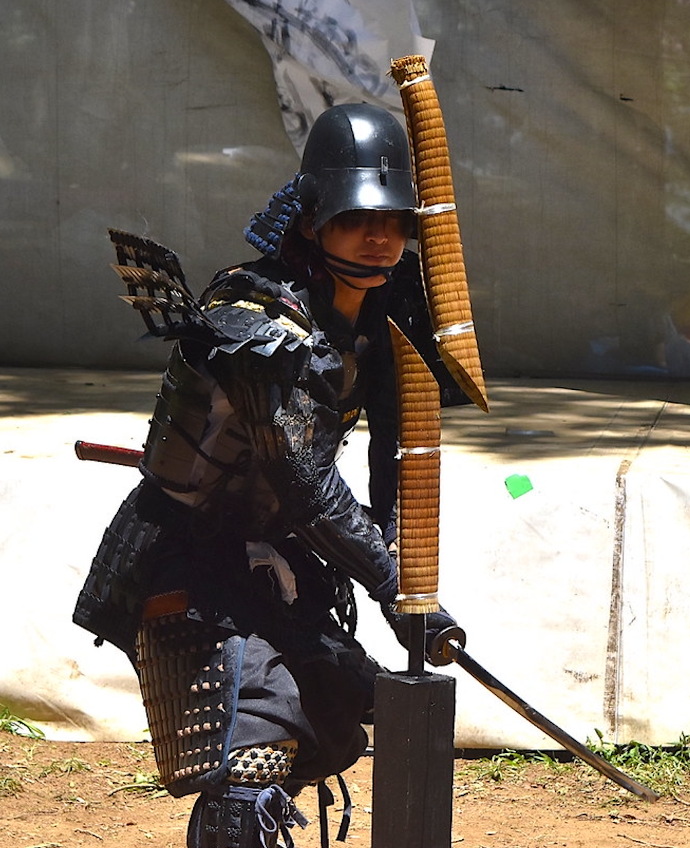
TAMESHIGIRI
Tamshigiri is a cutting exercise. In the twenty-first century, it is mainly practiced on tatami or bamboo - sometimes both together.
This is a good indicator of the quality of the incorporation of technical, physical and mental teachings. The slightest variation is visible and reflects to the practitioner the path that remains to be taken.
Unlike iaijutsu, tameshigiri is practiced with a sharp blade.